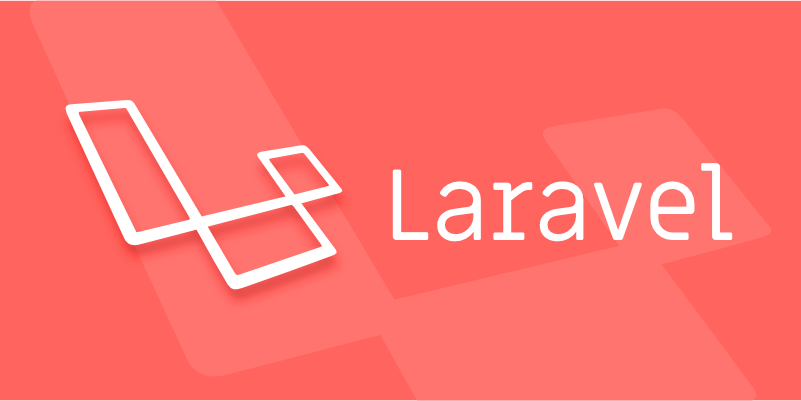Differentiating between Laravel Policies and Gates for authorization
Jul 07, 2025 am 12:46 AMIn Laravel, use Gates for general authorization checks not tied to models and Policies for model-specific logic. Gates are simple closures ideal for global permissions like edit-settings, while Policies organize actions like update or delete around specific models. Use Gates when logic is straightforward and Policies when dealing with model ownership or complex rules. Avoid misusing Gates for model-based checks, overloading Gates with conditions, or failing to register Policies properly. Gates and Policies can coexist, allowing flexibility as app complexity grows.

When it comes to handling authorization in Laravel, two main tools are available: Policies and Gates. While both serve the same purpose—determining whether a user can perform a specific action—their use cases and structures differ. Knowing when to use one over the other helps keep your app organized and maintainable.

Let’s break down what each does best and how they fit into real-world scenarios.

What Are Laravel Gates?
Gates are simple, closure-based checks that determine if a user can perform a specific action. They’re ideal for general authorization logic that doesn’t tie directly to a model.
For example:

Gate::define('edit-settings', function ($user) {
return $user->isAdmin();
});You can then check this gate anywhere using:
if (Gate::allows('edit-settings')) {
// Proceed
}Use gates when:
- You're authorizing actions that aren't tied to a specific model.
- The logic is straightforward and not likely to grow complex.
- You need a quick way to centralize small permission checks.
They’re especially handy for global permissions like “access-admin-panel” or “delete-any-post”.
What Are Laravel Policies?
Policies, on the other hand, are classes tied to specific models. They help organize authorization logic around those models. For example, a PostPolicy might handle actions like view, create, update, and delete for the Post model.
You generate a policy with Artisan:
php artisan make:policy PostPolicy --model=Post
Then define methods inside it:
public function update(User $user, Post $post)
{
return $user->id === $post->author_id;
}Check it in your controller like this:
$this->authorize('update', $post);Use policies when:
- Authorization logic is closely tied to a particular model.
- You expect the logic for a model’s permissions to grow over time.
- You want better organization and separation of concerns in larger apps.
This makes them perfect for things like checking if a user owns a resource before editing it.
When to Choose Gates vs Policies
Here's a quick comparison to guide your decision:
- ? Use gates for generic permissions across your app (like accessing admin features).
- ? Use policies when dealing with model-specific actions (like editing a post or deleting a comment).
Another practical tip:
If you find yourself writing a lot of gates related to a single model, consider switching to a policy. It keeps things cleaner and easier to manage as complexity grows.
Also, gates and policies can coexist. You can mix and match depending on what makes sense for each part of your application.
A Few Common Mistakes to Avoid
It’s easy to misuse gates and policies, especially when starting out. Here are some pitfalls to watch for:
- ? Using gates for everything—even when tied to models. This leads to messy code later.
- ? Overloading a single gate with too many conditions. Keep gates focused.
- ? Not registering policies properly. If a policy isn’t bound to a model in
AuthServiceProvider, Laravel won’t use it. - ? Forgetting to pass the model instance when calling
authorize(). Policies rely on it for context.
One thing that trips people up is thinking that gates and policies are mutually exclusive. In reality, they complement each other well.
So basically, gates are for general checks and policies are for model-based ones. Pick whichever fits your scenario better—and don’t be afraid to switch between them as your needs evolve.
That’s about it.
The above is the detailed content of Differentiating between Laravel Policies and Gates for authorization. For more information, please follow other related articles on the PHP Chinese website!

Hot AI Tools

Undress AI Tool
Undress images for free

Undresser.AI Undress
AI-powered app for creating realistic nude photos

AI Clothes Remover
Online AI tool for removing clothes from photos.

Clothoff.io
AI clothes remover

Video Face Swap
Swap faces in any video effortlessly with our completely free AI face swap tool!

Hot Article

Hot Tools

Notepad++7.3.1
Easy-to-use and free code editor

SublimeText3 Chinese version
Chinese version, very easy to use

Zend Studio 13.0.1
Powerful PHP integrated development environment

Dreamweaver CS6
Visual web development tools

SublimeText3 Mac version
God-level code editing software (SublimeText3)

Hot Topics
 What are routes in Laravel, and how are they defined?
Jun 12, 2025 pm 08:21 PM
What are routes in Laravel, and how are they defined?
Jun 12, 2025 pm 08:21 PM
In Laravel, routing is the entry point of the application that defines the response logic when a client requests a specific URI. The route maps the URL to the corresponding processing code, which usually contains HTTP methods, URIs, and actions (closures or controller methods). 1. Basic structure of route definition: bind requests using Route::verb('/uri',action); 2. Supports multiple HTTP verbs such as GET, POST, PUT, etc.; 3. Dynamic parameters can be defined through {param} and data can be passed; 4. Routes can be named to generate URLs or redirects; 5. Use grouping functions to uniformly add prefixes, middleware and other sharing settings; 6. Routing files are divided into web.php, ap according to their purpose
 What are policies in Laravel, and how are they used?
Jun 21, 2025 am 12:21 AM
What are policies in Laravel, and how are they used?
Jun 21, 2025 am 12:21 AM
InLaravel,policiesorganizeauthorizationlogicformodelactions.1.Policiesareclasseswithmethodslikeview,create,update,anddeletethatreturntrueorfalsebasedonuserpermissions.2.Toregisterapolicy,mapthemodeltoitspolicyinthe$policiesarrayofAuthServiceProvider.
 How do I create new records in the database using Eloquent?
Jun 14, 2025 am 12:34 AM
How do I create new records in the database using Eloquent?
Jun 14, 2025 am 12:34 AM
To create new records in the database using Eloquent, there are four main methods: 1. Use the create method to quickly create records by passing in the attribute array, such as User::create(['name'=>'JohnDoe','email'=>'john@example.com']); 2. Use the save method to manually instantiate the model and assign values ??to save one by one, which is suitable for scenarios where conditional assignment or extra logic is required; 3. Use firstOrCreate to find or create records based on search conditions to avoid duplicate data; 4. Use updateOrCreate to find records and update, if not, create them, which is suitable for processing imported data, etc., which may be repetitive.
 How do I run seeders in Laravel? (php artisan db:seed)
Jun 12, 2025 pm 06:01 PM
How do I run seeders in Laravel? (php artisan db:seed)
Jun 12, 2025 pm 06:01 PM
Thephpartisandb:seedcommandinLaravelisusedtopopulatethedatabasewithtestordefaultdata.1.Itexecutestherun()methodinseederclasseslocatedin/database/seeders.2.Developerscanrunallseeders,aspecificseederusing--class,ortruncatetablesbeforeseedingwith--trunc
 What is the purpose of the artisan command-line tool in Laravel?
Jun 13, 2025 am 11:17 AM
What is the purpose of the artisan command-line tool in Laravel?
Jun 13, 2025 am 11:17 AM
Artisan is a command line tool of Laravel to improve development efficiency. Its core functions include: 1. Generate code structures, such as controllers, models, etc., and automatically create files through make: controller and other commands; 2. Manage database migration and fill, use migrate to run migration, and db:seed to fill data; 3. Support custom commands, such as make:command creation command class to implement business logic encapsulation; 4. Provide debugging and environment management functions, such as key:generate to generate keys, and serve to start the development server. Proficiency in using Artisan can significantly improve Laravel development efficiency.
 How do I install Laravel on my operating system (Windows, macOS, Linux)?
Jun 19, 2025 am 12:31 AM
How do I install Laravel on my operating system (Windows, macOS, Linux)?
Jun 19, 2025 am 12:31 AM
Yes,youcaninstallLaravelonanyoperatingsystembyfollowingthesesteps:1.InstallPHPandrequiredextensionslikembstring,openssl,andxmlusingtoolslikeXAMPPonWindows,HomebrewonmacOS,oraptonLinux;2.InstallComposer,usinganinstalleronWindowsorterminalcommandsonmac
 How do I define methods (actions) in a controller?
Jun 14, 2025 am 12:38 AM
How do I define methods (actions) in a controller?
Jun 14, 2025 am 12:38 AM
Defining a method (also known as an action) in a controller is to tell the application what to do when someone visits a specific URL. These methods usually process requests, process data, and return responses such as HTML pages or JSON. Understanding the basic structure: Most web frameworks (such as RubyonRails, Laravel, or SpringMVC) use controllers to group related operations. Methods within each controller usually correspond to a route, i.e. the URL path that someone can access. For example, there may be the following methods in PostsController: 1.index() – display post list; 2.show() – display individual posts; 3.create() – handle creating new posts; 4.u
 How do I run tests in Laravel? (php artisan test)
Jun 13, 2025 am 12:02 AM
How do I run tests in Laravel? (php artisan test)
Jun 13, 2025 am 12:02 AM
ToruntestsinLaraveleffectively,usethephpartisantestcommandwhichsimplifiesPHPUnitusage.1.Setupa.env.testingfileandconfigurephpunit.xmltouseatestdatabaselikeSQLite.2.Generatetestfilesusingphpartisanmake:test,using--unitforunittests.3.Writetestswithmeth






